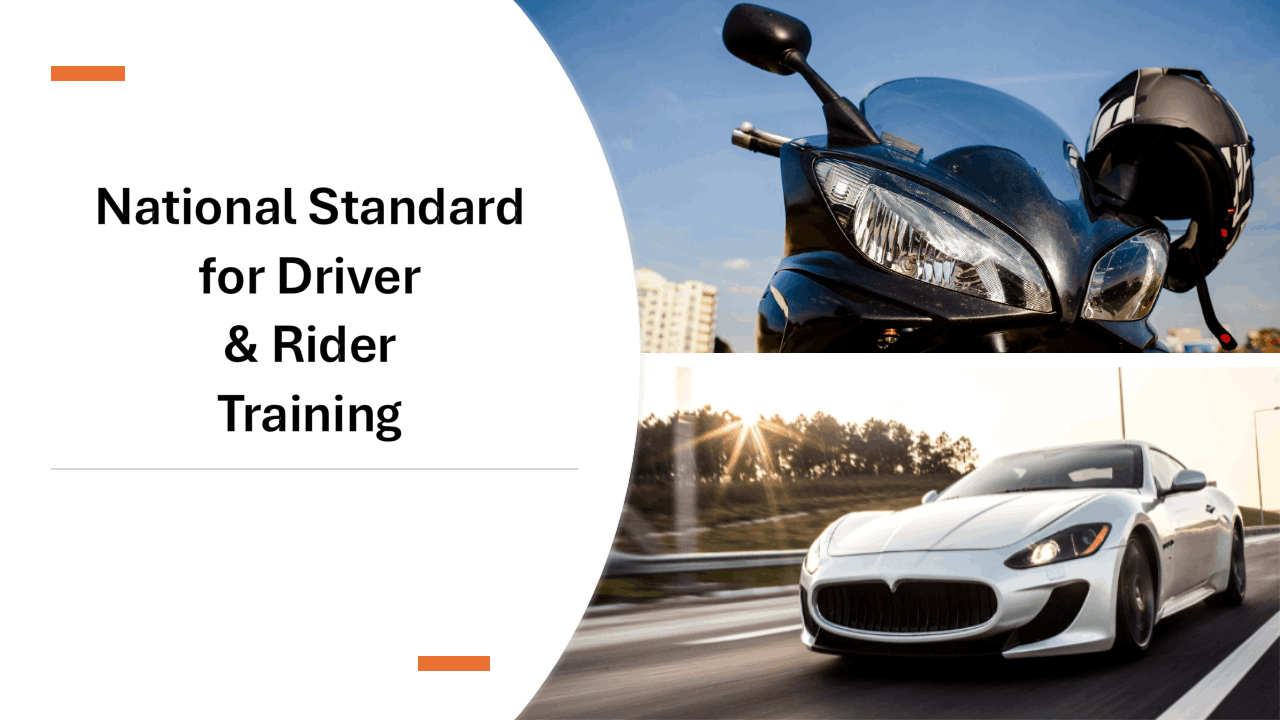

Introducing the ‘National standard for driver and rider training’
This national standard sets out the skills, knowledge and understanding needed to deliver a
programme of driver/rider training. It covers training for drivers or riders of all types of cars, light
vans, motorcycles and mopeds for use on the road. It covers training for licence acquisition and
post-test driving/riding programmes.
The standard assumes that any person wishing to teach somebody to drive or ride has
* a current driving/riding licence
* mastered all the competences set out in roles 1 to 4 of the ‘National standard for driving cars and
light vans (category B)’ or the ‘National standard for riding mopeds and motorcycles (category A)’
* demonstrated competence in role 5 of the ‘National standard for driving cars and light vans
(category B)’ or the ‘National standard for riding mopeds and motorcycles (category A)’
In other words it assumes that they have maintained and improved their competence, at both the
theoretical and practical levels, since they acquired their licence. Candidates will be expected to
demonstrate at least level 3 competence.
This standard sets out the knowledge, skills and understanding needed to deliver successful
learning. It talks about instructors delivering agreed syllabuses using a ‘client-centred’ approach. The
Standard talks mainly about the skills, knowledge and understanding required to work ‘in-car’ (or ‘on
bike’) but also acknowledges that some driver/rider training organisations may opt to deliver part of
any given syllabus to a classroom group. The knowledge, skills and understanding that apply in the
classroom have therefore been included, but not all instructors will choose to train in this way. For
motorcycle instructors, however, group delivery in a classroom (or similar training environment) is a
core skill.
The standard includes some of the skills, knowledge and understanding needed by trainers of
instructors (such as role play). It assumes higher level assessment skills will be covered by a
standard assessor unit.
As with all of the Driver and Vehicle Standards Agency’s (DVSA’s) standards, this standard is
expected to change in response to further evidence that may emerge and to peer comment. It is
expected that the range of units will be extended to cover specialist areas such as the Equality Act
and the delivery of remedial programmes.
Note:
These units were used as the basis for redefining the Driver Training National Occupational
Standards, which are used to develop any driver training qualifications.
Role 6 – Deliver driver/rider training programmes
Unit 1 – Prepare to train learner driver/riders – meet all legal requirements.
What this unit is about
This unit is about confirming that you meet all the legal requirements before you start delivering
training. These cover
* the vehicle or machine you intend to use
* your status as an instructor
The core of this unit is that you must know and understand what the law says about using a vehicle
or machine for training purposes and about your entitlement to deliver training.
Some of the tasks may be given to other people in your organisation. However, you should still be
able to confirm that the vehicle you intend to use is roadworthy and that you are legally able to carry
out the training.
This unit contains two elements
Element 6.1.1 – Confirm that you comply with legal requirements
Element 6.1.2 – Confirm that the training vehicle is fit for purpose
Who this unit is for
This unit is for instructors who train learner driver/riders.
Glossary
Your organisation. This is the company you work for or, if you are self employed, the rules you
have set for yourself to make sure you comply with relevant legal and
licensing requirements.
Vehicle This covers all powered means of travel, such as cars, motorcycles, vans, etc.
Driver/rider This includes drivers or riders of all vehicles.
Learner This term can indicate novice, partly trained, trained or experienced
driver/riders, including those who may be adding a licence category.
* DVSA is aware that satellite navigation systems can take a variety of forms; embedded within the
manufacturer’s standard equipment, free-standing/post-market or smartphone app. The technology
is also evolving rapidly. The use of the phrase ‘satellite navigation system’ in this standard is taken
to mean any electronic device, of whatever format, that is used as an aid to navigation.